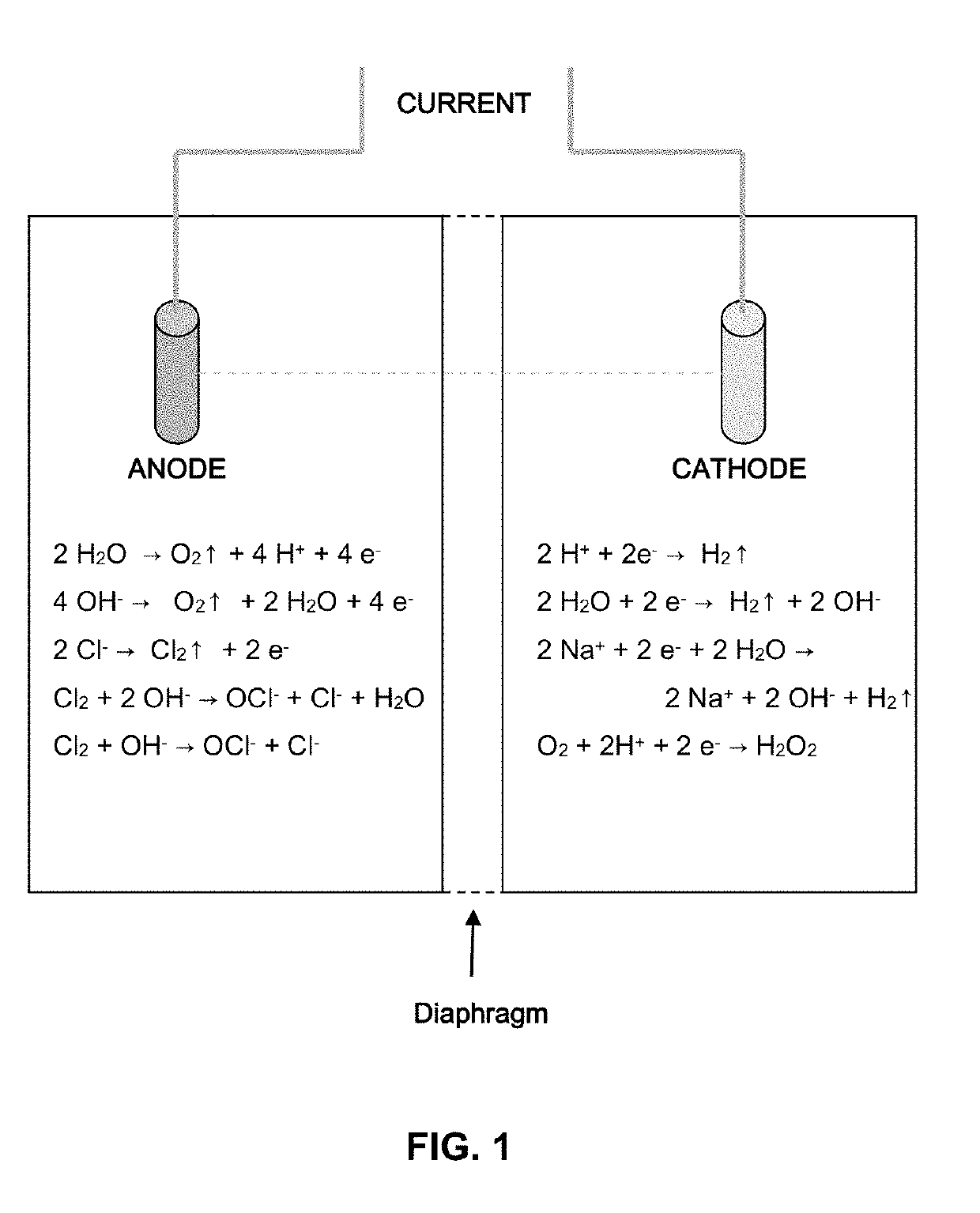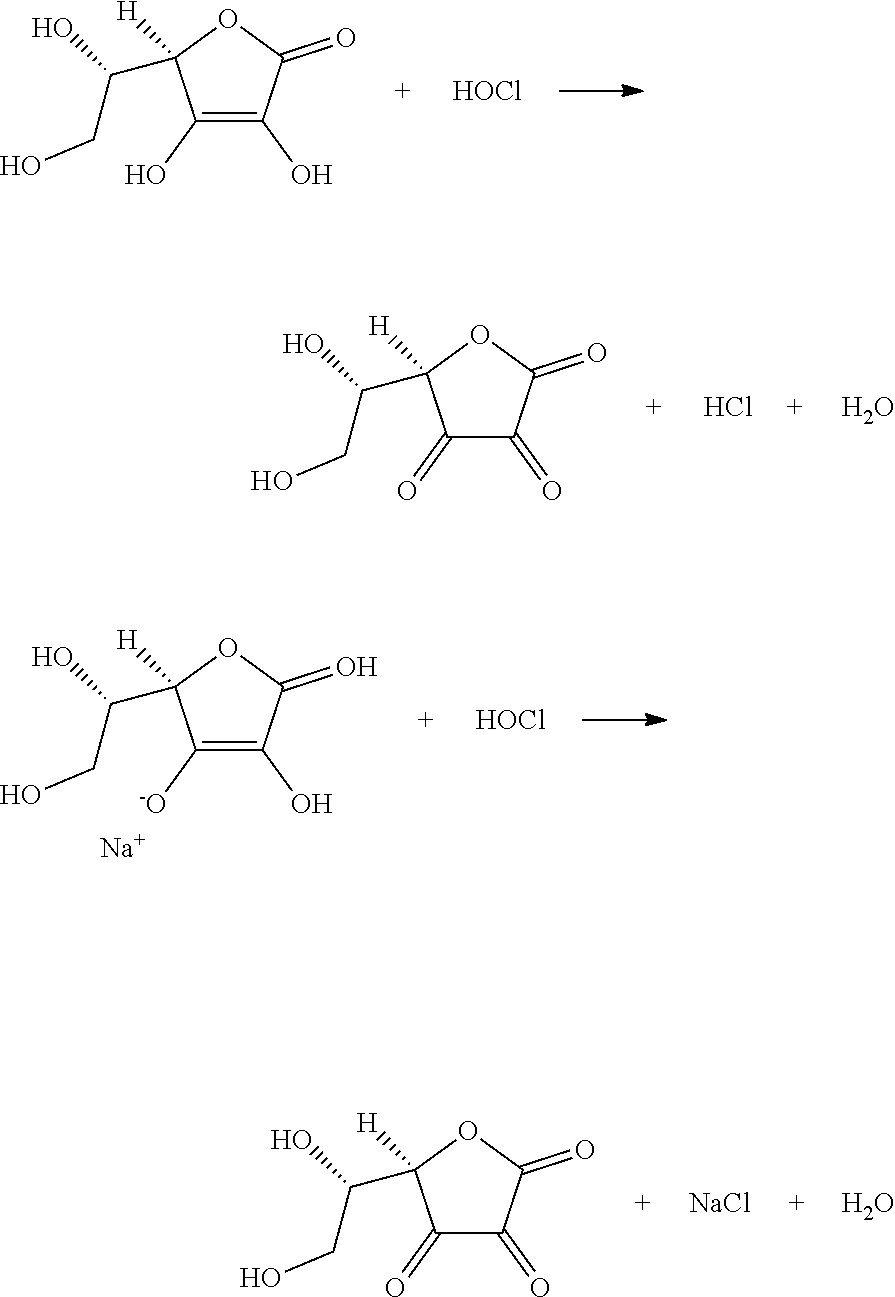Materials reducing formation of hypochlorite
a technology of material and hypochlorite, applied in the field of electrochemical wound dressing, can solve the problems of hypochlorite anions, hypochlorous acid (hclo), and potentially harmful in biomedical systems, and achieve the effects of promoting and/or accelerating wound healing, simple manner, and without the risk of potential cytotoxic effects
- Summary
- Abstract
- Description
- Claims
- Application Information
AI Technical Summary
Benefits of technology
Problems solved by technology
Method used
Image
Examples
first embodiment
[0023]In a first embodiment, the present invention therefore relates to an electrochemical wound dressing, comprising: first and second electrodes, an electrical power source in electrical contact with the first and the second electrode, and at least one material selected from a first material and a second material; wherein the first material is a catalyst for the electrochemical conversion of hypochlorite anions or hypochlorous acid, and wherein the second material is capable of reacting as a substitute for the precursor species leading to the generation of hypochlorite anions or hypochlorous acid and / or capable of reducing hypochlorite anions or hypochlorous acid. Said embodiment minimizes or prevents the formation of ClO− / HClO− at the wound site and simultaneously allows to make use of the bactericidal effects of hydrogen peroxide formed at the electrode acting as a cathode.
The term “dressing”, as used herein, refers to a sterile article that may include a bandage, adhesive tape,...
second embodiment
[0043]In a second embodiment, the present invention relates to the use of at least one material selected from a first material and a second material for preventing formation of or for reducing hypochlorite anions or hypochlorous acid in a medical device or article, wherein the first material is a catalyst for the electrochemical conversion of hypochlorite anions or hypochlorous acid, and wherein the second material is capable of reacting as a substitute for the precursor species leading to the generation of hypochlorite anions or hypochlorous acid and / or capable of reducing hypochlorite anions or hypochlorous acid.
[0044]The medical device or article is preferably an electrochemical medical device or article, which performs a function inside or on the surface of the human body by means of electrochemical process. Examples thereof include drug delivery apparatuses, neurostimulators, electrochemical cells, implantable or external sensors, and electrochemical wound dressings. Preferably...
PUM
| Property | Measurement | Unit |
|---|---|---|
| conductive | aaaaa | aaaaa |
| flexible | aaaaa | aaaaa |
| electrical properties | aaaaa | aaaaa |
Abstract
Description
Claims
Application Information
 Login to View More
Login to View More - R&D
- Intellectual Property
- Life Sciences
- Materials
- Tech Scout
- Unparalleled Data Quality
- Higher Quality Content
- 60% Fewer Hallucinations
Browse by: Latest US Patents, China's latest patents, Technical Efficacy Thesaurus, Application Domain, Technology Topic, Popular Technical Reports.
© 2025 PatSnap. All rights reserved.Legal|Privacy policy|Modern Slavery Act Transparency Statement|Sitemap|About US| Contact US: help@patsnap.com



